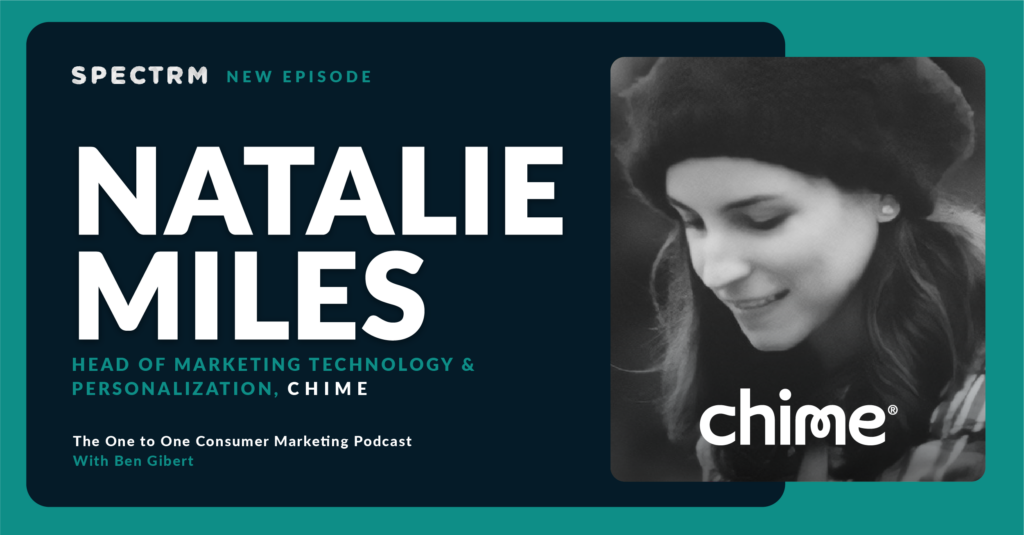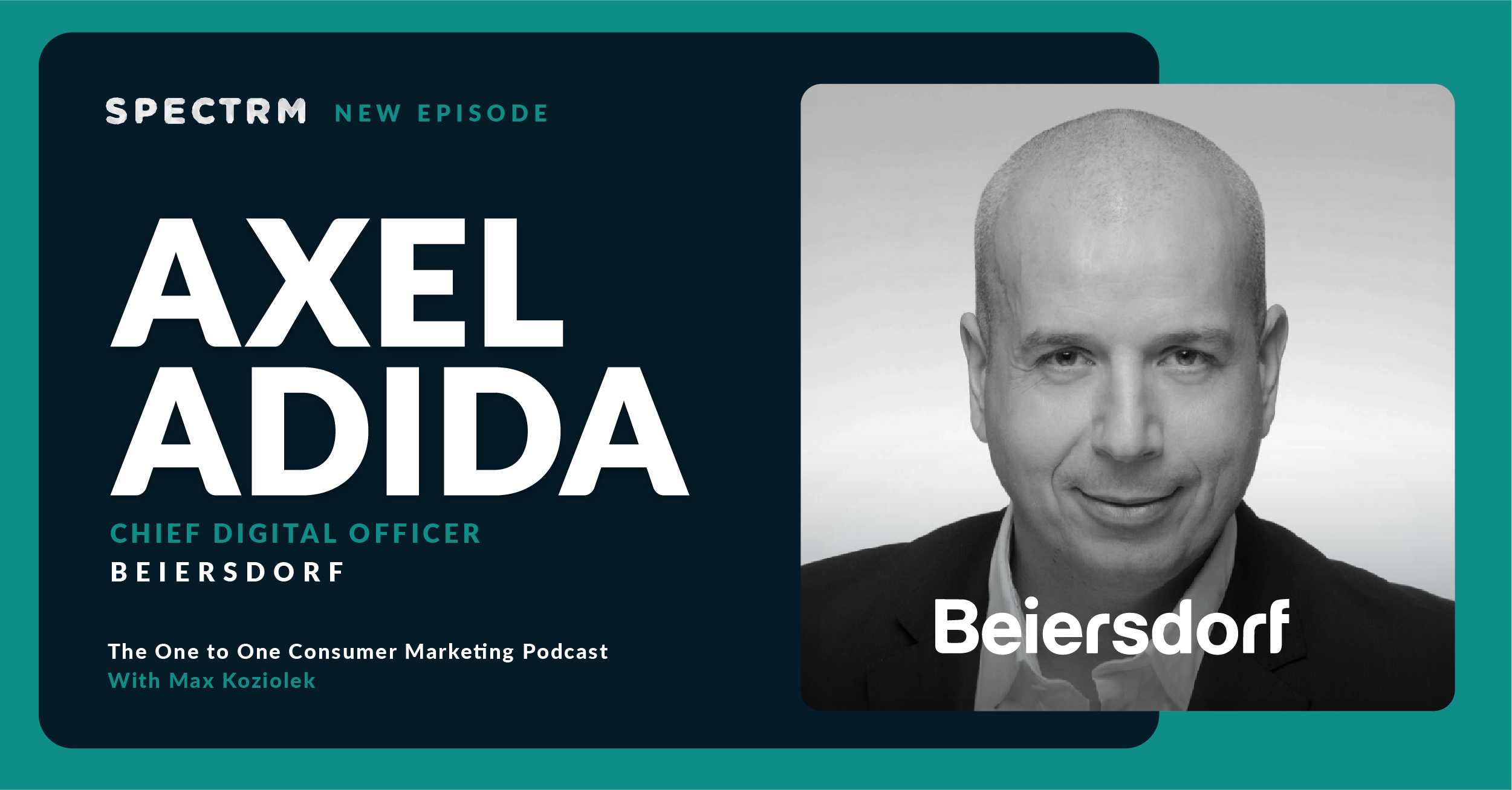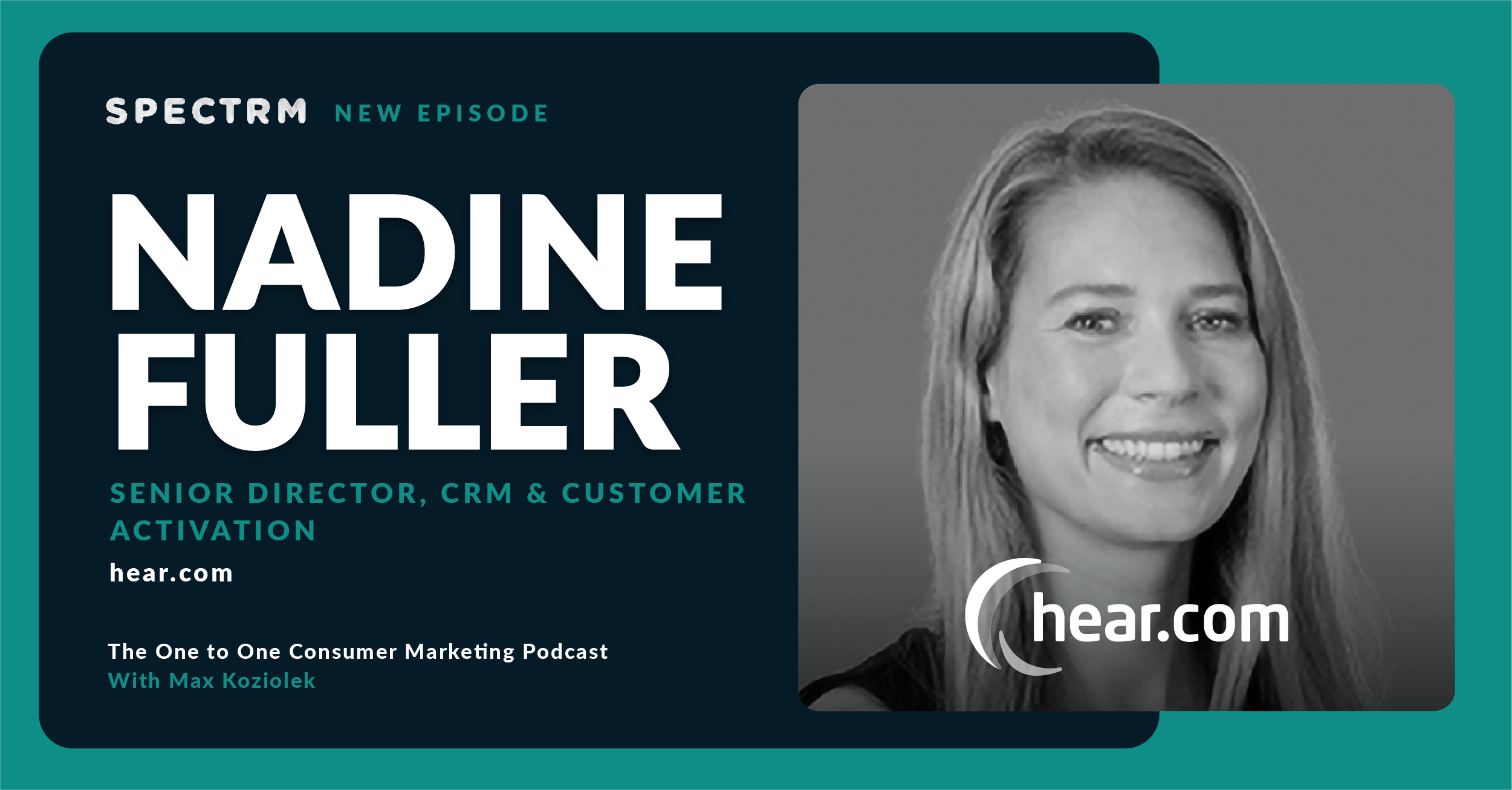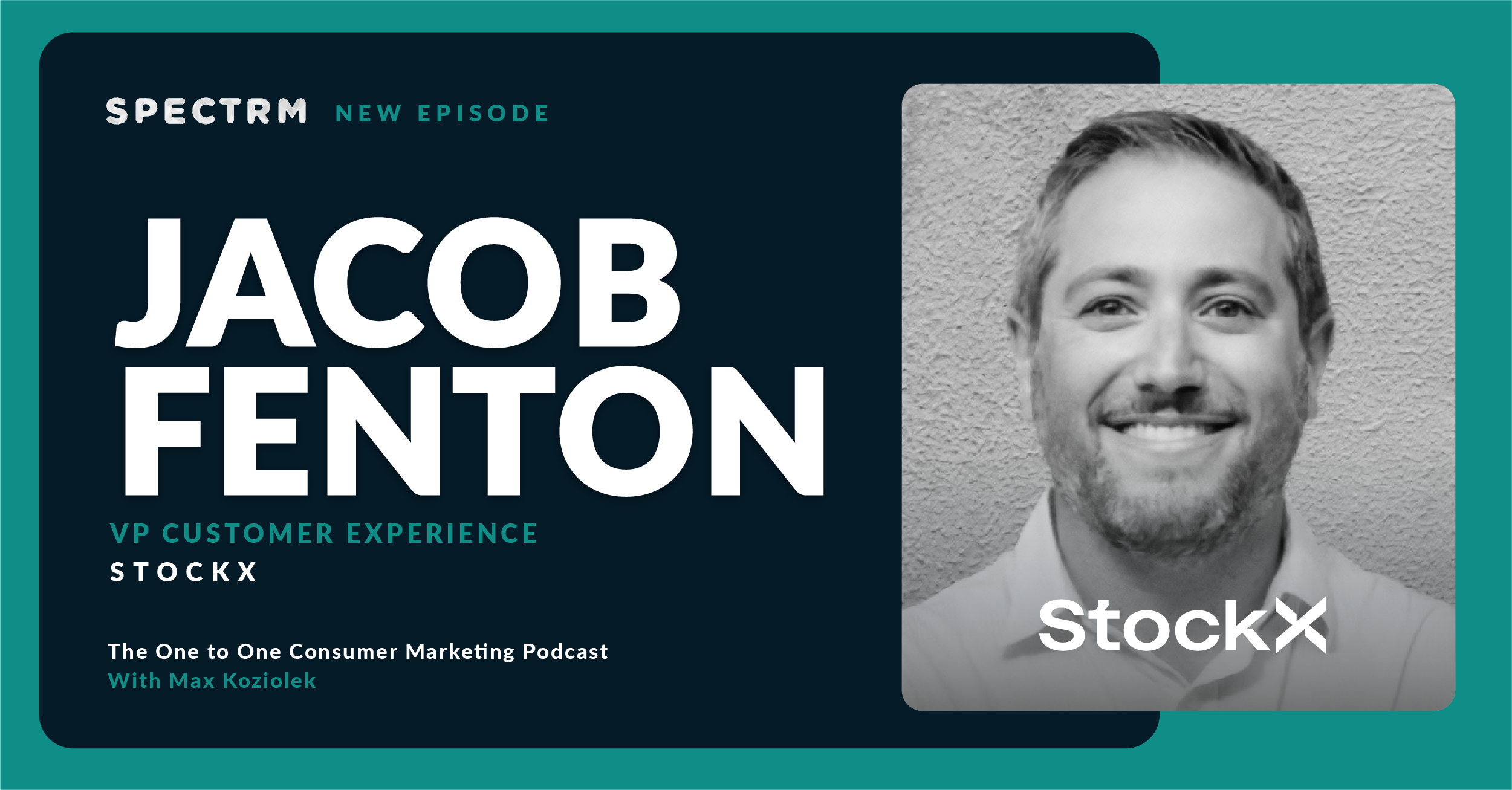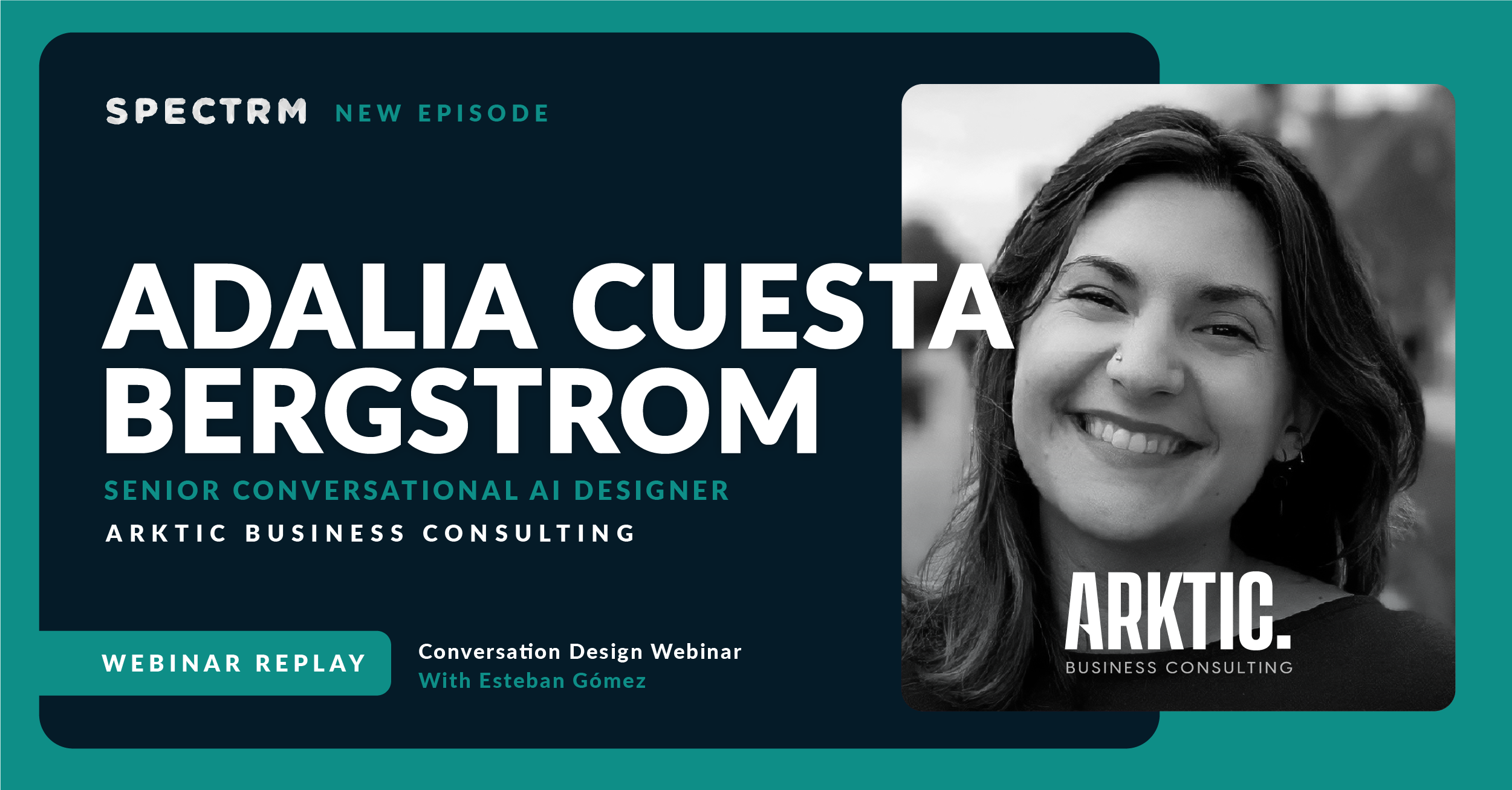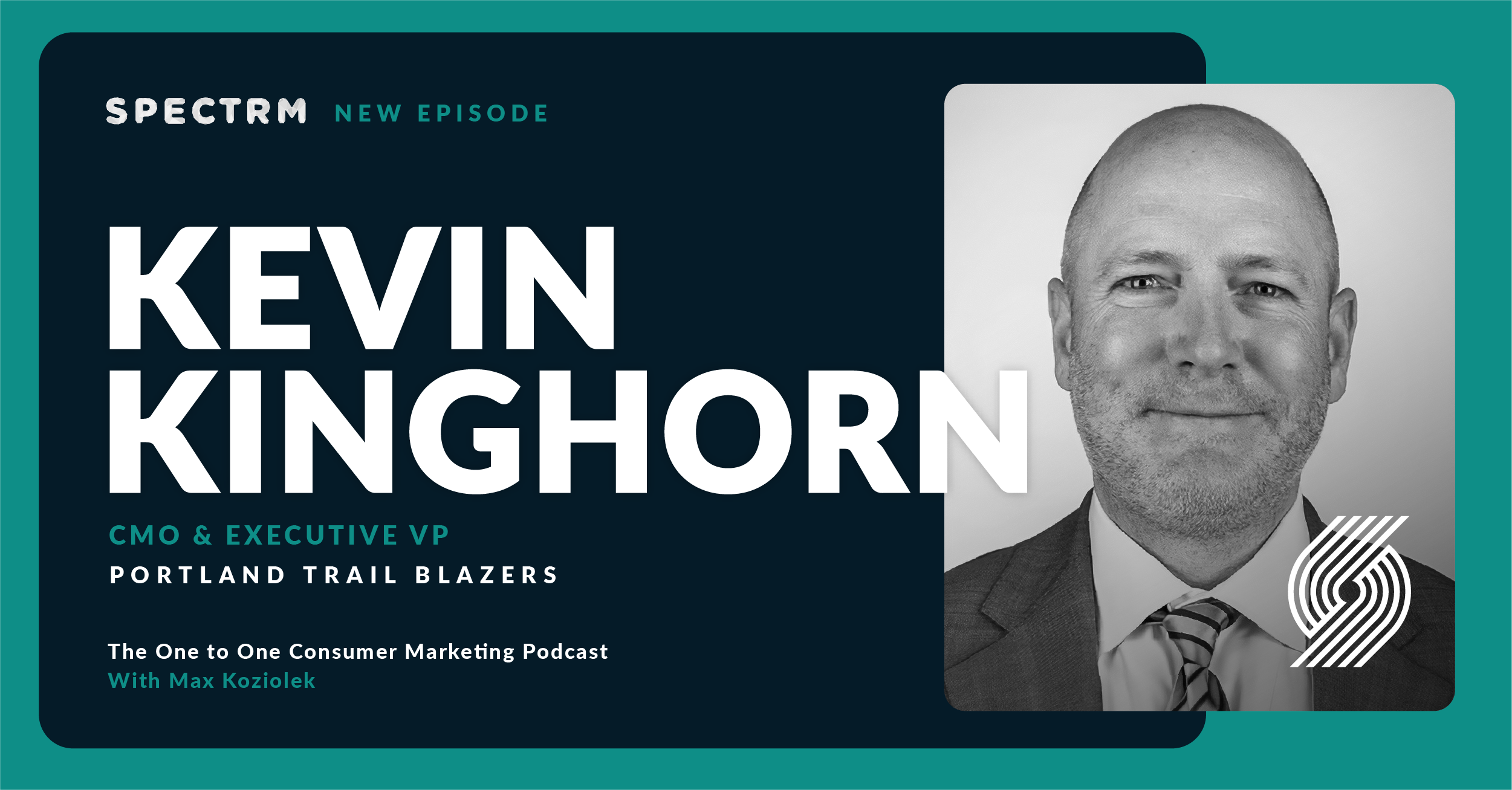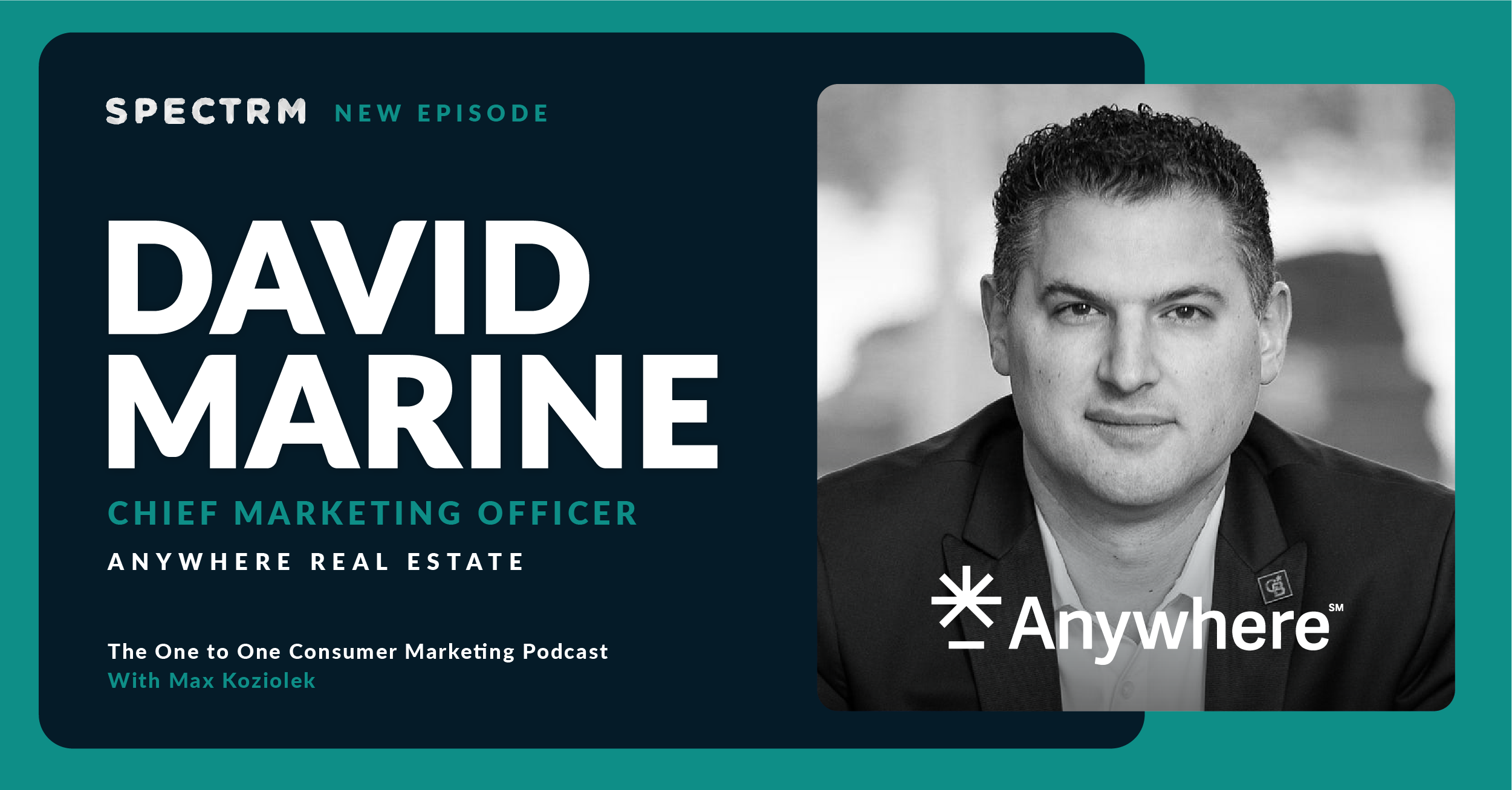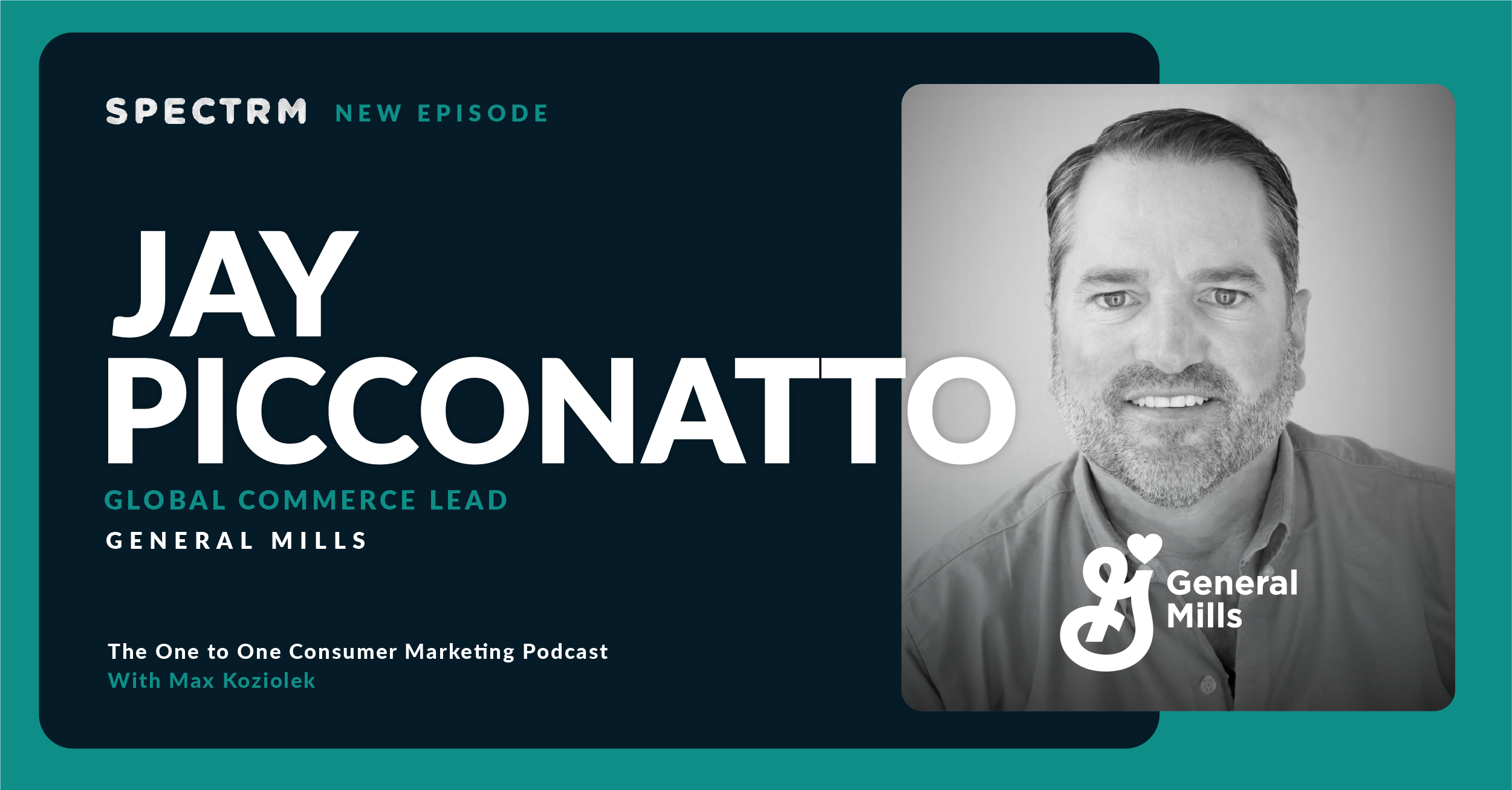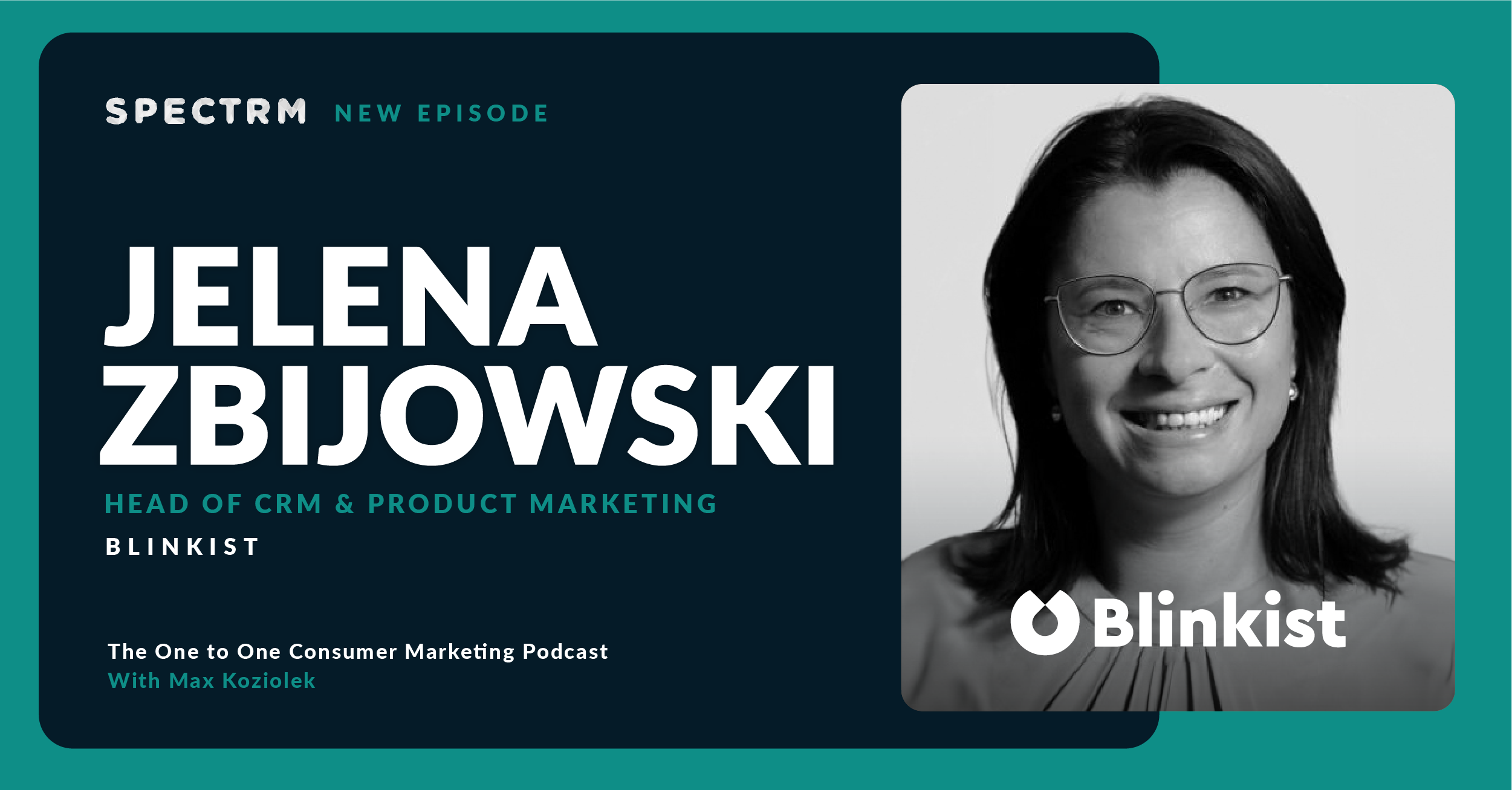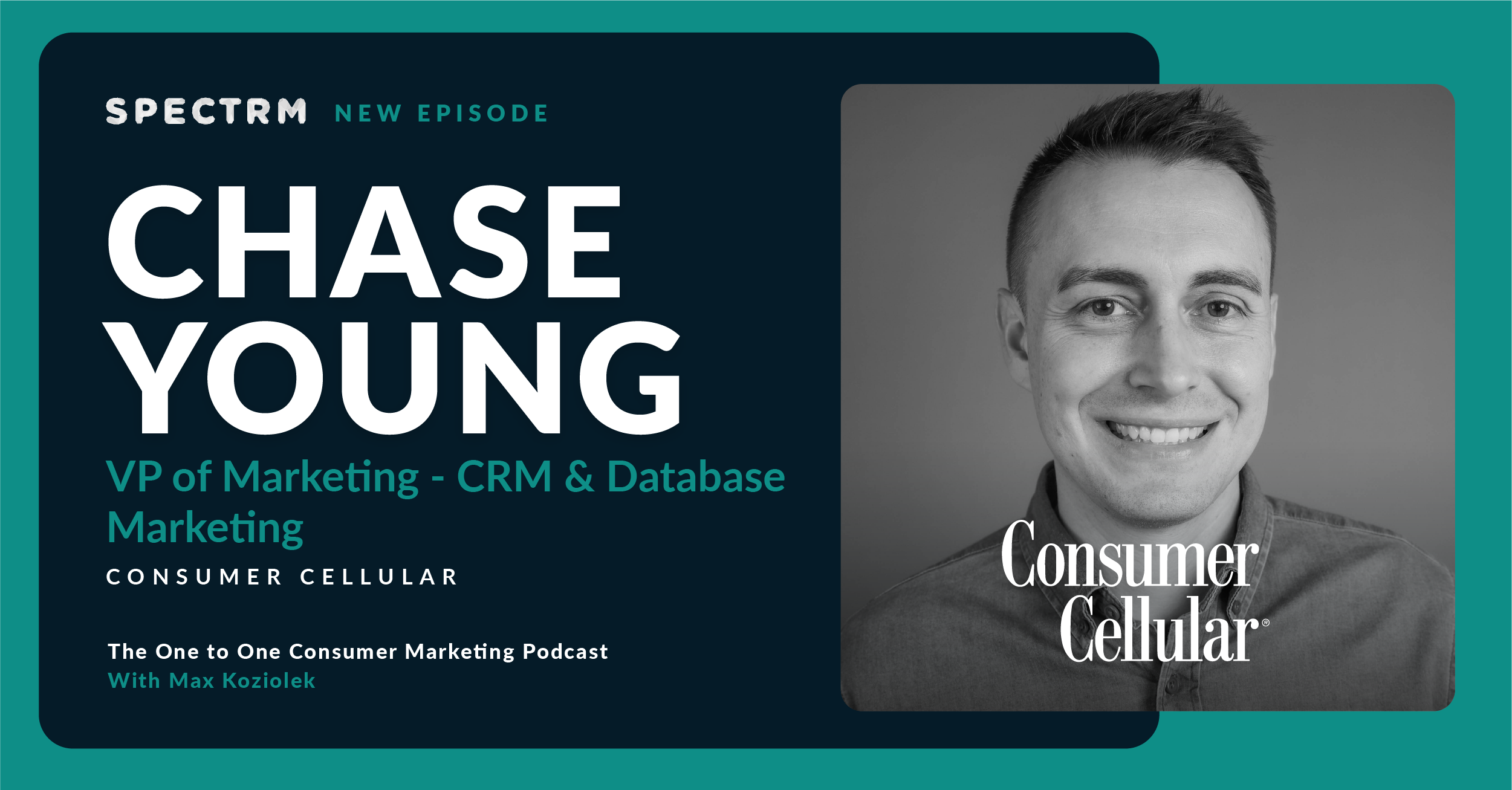Summary
Ben speaks with Natalie Miles, Head of Marketing Technology & Personalization at Chime, a financial technology company that offers banking services. They discuss how personalization at scale begins with well-managed data, what benefits focusing on retention can bring to lifecycle marketing, and how to better collaborate with cross-functional teams. They also discuss common challenges to consumer marketing, including how to stand out among commoditization, how to better measure channels, and how to prepare for the future of consumer marketing.
Topics discussed
- Why good data management, data hygiene, and less fragmentation across records are the foundation for building personalization at scale.
- Why lifecycle marketing “shines” when companies focus on retention, and how you can better leverage your channels with a focus on retention.
- The common challenges to consumer marketing today and how brands can stand out among a commoditized landscape.
- Why marketers shouldn’t get hung up on superficial channel metrics and why you need the right channels to deliver the right message so that customers take further action.
- What new technology will impact marketing, like using automation to make testing and experimentation faster and more scalable.
- Advice for consumer marketers, including the need to be able to speak the language of other teams since marketing is so cross-functional.
- The future of consumer marketing, which will include more consolidation of tools, more cross-functionality, and the rise of marketing generalists.
When Chime started off, it was very easy to be differentiated in the market. No one else was doing get your paycheck two days early or fee free overdraft. Now those value props have become heavily commoditized. So how do you stand out in that space? And that's where brand and personalization start to become really key in differentiating from all the other product offerings that are identical. So between pullback on ad spend budgets, increased product offerings, and then seeing the fintech space being more heavily commoditized, personalization is, I think, more key to standing out amongst your competitors.
Guest biography

- Built and managed holistic MarTech stack supporting all channels and functions within the Marketing org. Oversaw selection and implementation of our Customer Data Platform (CDP), and overall experimentation and personalization strategy.
Company overview
Chime was created with the mission to make financial peace of mind a reality for millions of everyday people. We’re one of the fastest-growing financial technology companies in the U.S., offering banking services that are helpful, easy, and free—because we want to profit with our members, not from them. Our model doesn’t rely on overdraft, monthly service, minimum balance, or other member fees—it just focuses on delivering member value.
Industry: financial services | www.chime.com
Subscribe to the podcast newsletter
Transcript
00:00
Natalie Miles
When Chime started off, it was very easy to be differentiated in the market. No one else was doing get your paycheck two days early or fee free overdraft. Now those value props have become heavily commoditized. So how do you stand out in that space? And that’s where brand and personalization start to become really key in differentiating from all the other product offerings that are identical. So between pullback on ad spend budgets, increased product offerings, and then seeing the fintech space being more heavily commoditized, personalization is, I think, more key to standing out amongst your competitors. You.
00:46
Ben Gibert
Hey everyone, and thanks for listening to and watching the one to one consumer marketing podcast. Hope you’re all having a great day wherever you are. Today I’m speaking with Natalie Miles, who is Head of Marketing Operations at Chime. Natalie, thanks so much for chatting with me today.
01:02
Natalie Miles
My pleasure.
01:03
Ben Gibert
Yeah. Before we get into the meat of the episode, can you tell our audience just a little bit more about yourself, your background and how you ended up at Chime?
01:11
Natalie Miles
Sure. Yeah. I think like most people in the marketing technology space, I just sort of fell into marketing technology. It know, a dream of mine as a little girl. I know there’s a lot around T shaped marketers nowadays, this concept of someone who has broad exposure to a lot of different marketing channels, but deep expertise in one or two marketing channels. I’d say I have more of an eye shaped background in marketing. So by that I actually started as an operations analyst many years ago at Lending Club. So was mainly focused on helping to optimize and scale our operations and support functions. And then from there I moved on to Credit Karma where I joined the marketing operations org. And that was a great exposure in that I had a broad overview of all of our different channels, how they all work together in concert, and then started to specialize in lifecycle marketing from there.
02:08
Natalie Miles
And Credit Karma was a wonderful place to learn lifecycle marketing because it was such a data driven lifecycle marketing function know, the kind of place where we sent an incremental email and we knew exactly the impact it had on revenue to the company at the end of the day. And so from Credit Karma, I joined Chime. The comic thread throughout my career has been these very mission driven fintech companies that are focused on disrupting these pain points in the everyday financial experience of most Americans. So for those of you who might not be familiar with Chime is the largest and one of the oldest neo banks in the United States. We’re really focused on serving the 80% of Americans who live paycheck to paycheck. And we offer certain products that are designed to help people make it to their next paycheck without a lot of pain.
03:03
Natalie Miles
So at Chime, I focused on lifecycle marketing. Very similar to my experience at Credit Karma where I was helping to scale our lifecycle function. Also getting us up and running on some newer channels like Push and Rich Push and then from there started to branch out again. So moved out from Lifecycle to our newly formed marketing technology team which was centralized and had a charter around owning all of our different marketing tools and systems in a way that would enable us to do more personalized messaging at scale. So that included supporting our Paid team as well as our SEO teams and a little bit of brand.
03:47
Ben Gibert
Nice. Thank you so much for that overview. I’m excited to dive into the personalized messaging at scale because I know Chime has done a lot in that space. So there’s going to be so much that you can talk to before that. Just for the sake of our listeners, I’d love for you to explain a little bit more. You mentioned like I shape marketer versus T shaped marketer. What is an eye shape marketer, just so everyone knows.
04:08
Natalie Miles
Yeah, to go back to the T shape marketer, you usually start off your career as sort of a domain expert or channel expert, either in Lifecycle or Paid. And as you climb the ladder, you start getting broader exposure to other channels and you start making decisions around channel mix and channel investment. I think what is a little bit different with a lot of marketing operations functions is you get that exposure to all the different channels very early on and marketing operations is very different depending on what company you go to. At Credit Karma, it was more program management. So really focused on making sure that all of our marketing team driving alignment across OKRs, across all of our different marketing teams when we had major strategy pivots, making sure all of the teams were aligned. From there, though, what I found was really missing was a lot of that operator experience.
05:13
Natalie Miles
So actually getting your hands on an actual campaign, there’s something very fulfilling about being a campaign owner and being able to launch experiments to your users or members and see the results of those experiments come in. So that’s just a lot of fun. And that hands on learning is so valuable, especially if you want to eventually become that T shaped marketer again and oversee marketing strategy. You have to have some of that hands on campaign experience. So that was really valuable. And then what I love about marketing technology is that to me marketing technology is marketing strategy. So you need to have a good foundation in how all these channels work and underlying data strategies in order to do marketing technology really well. Because what a lot of marketing orgs find is if you want to do anything around Omnichannel messaging, you need to have a good data foundation and an integrated tooling tech stack in order to do that.
06:15
Natalie Miles
But you also need some of that exposure to all the different channels and some of the nuances of those channels in order to do that effectively.
06:21
Ben Gibert
Yeah, absolutely. I think it’s one of those things, too. As you grow as a marketing leader and you start overseeing strategy across all the channels, it almost hurts a little bit that you can’t be closer to the campaigns that you once used to run or that creative. But it sounds like also that I love what you said about marketing technology is in part the strategy because it’s so fundamental to so much that we do now. So I’d love to dig into that a little bit more. And I’m sure it speaks a little bit to kind of how you see the state of consumer marketing today. But yeah, how do you see that?
06:53
Natalie Miles
Fragmented. Yes, fragmented everywhere. Our channels are fragmented. Right. If you’ve ever seen the marketing loomiscape, I think, chiefmartech.org, if you’ve seen how the marketing tooling landscape has evolved over time, right? There used to be a handful of marketing tools to service all of the marketing needs. I think we’re at 10,000 plus different marketing tools. So, one, there’s just been an explosion of tools in the market, and often as your marketing teams grow and scale, you’re usually focused on hiring those channel marketers. They often are not thinking about how do we connect our tools to, let’s say you’re a lifecycle marketer. You’re not thinking about how to connect your CRM tool to your different ad platforms where you’re doing paid marketing. It’s just not in the job description for a channel marketer to think about that. So we end up with very fragmented tech stacks and fragmented channels.
07:55
Natalie Miles
Most of the time, your data sets as a marketer are fragmented. Everyone wants that 360 view or golden record of the member, which is usually a myth, often because your data teams are siloed from your marketing teams and they don’t know how to talk to each other. And then there’s, of course, the privacy landscape, which is very much fragmented, especially in the United States where there is no federal privacy legislation to make things easier for us. So your day to day as a marketer is probably really hard right now, given all the different tools that are disconnected, the privacy landscape that is rapidly evolving, and the nature of COVID how we’ve done hiring all these teams are siloed and disconnected as well. So if you’re someone who can do a good job of partnering cross functionally, that’s a very good skill set to have in this current environment and not just work cross functionally with marketers on different teams and channels, work cross functionally with data teams, privacy teams, product teams.
08:58
Natalie Miles
So much of your success hinges on that ability to partner cross functionally and bridge that fragmentation right now.
09:05
Ben Gibert
Yeah, I couldn’t agree more. I think it’s such a good indication of the state that we’re in when the more and more things get fragmented in all of the ways that you’re describing, the more and more people are talking about unifying the customer journey right. And trying to find ways to stitch together identity, to stitch together that entire journey, be able to personalize across that journey, be able to model things on how that journey goes. I’d love to learn a little bit more at Chime. How are you dealing with that fragmentation and how are you dealing with the privacy side of it as kind of Head of Marketing Operations?
09:38
Natalie Miles
Yeah, well, one of the benefits, I would say, of the privacy landscape is that really does force you to get your data house in order. Because if you’re operating in a system of point to point integrations where there is no centralized system of record, you really run the risk of violating CCPA and sending out first party data about opted out users to downstream marketing platforms that shouldn’t be receiving it. So it really forces that, hey, we do need one system of record and get closer to that unified user profile in order to make sure we’re actually observing opt out requests correctly. So I guess that is one silver lining. And then there’s, of course, personalization. So I know personalization is also a huge buzzword in the marketing space. I think what often gets lost in the shuffle is that there is no personalization at scale.
10:33
Natalie Miles
So if you really want to do one to one marketing, that does not exist without data activation. So you have to have a way to get your data out of your system of record, whether it’s stored in some data warehouse in Snowflake or BigQuery, there needs to be an easy way to get that data out of your data warehouse into whatever marketing tool you’re using to send downstream campaigns to your users. And that’s historically been a big challenge. Actually. I think what ends up happening is you end up with these point to point integrations that don’t talk to each other and you end up with either different definitions of the same audience because you have marketers trying to recreate that definition or business logic in their own tools instead of sending that same unified audience to all your tools. So you have issues there. Or if you change the definition of what a retained user looks like somewhere upstream right.
11:33
Natalie Miles
That may not make its way into all the different downstream tools because it’s not being captured in a system of record. So I would say without that good data management and data hygiene, best practices and that system of record and data activation, there is no personalization at scale.
11:50
Ben Gibert
Yeah, I love that. I mean, it all starts with the integrity of the data, right? And like you said, I love not just that, but the ability to activate it too across the channel. So I think that might speak a little bit to how you think about lifecycle marketing today. But can you tell me a little bit? How do you think about Lifecycle Marketing and then how does it fit into kind of Chime’s company strategy today?
12:11
Natalie Miles
Yeah, so where I feel like Lifecycle Marketing really shines is when companies start to focus on retention as a business outcome. One thing I would say for people looking into Lifecycle jobs, and you’re betting companies try to see if you can get a sense of where that company is at in terms of growth. If they’re very much focused on acquisition, it may be harder to get the support and resourcing you need to run an effective Lifecycle team. Because if the company isn’t focused on retention, it’s really hard for your own channel strategy to demonstrate any value. And it makes sense, right? With own channels like email inpush, you have a direct line of communication to your existing users. So if you’re focused on retaining those users, your own channels start to shine quite a bit. So as these companies start to focus on retention as a business outcome, I think it also depends too on the nature of the business.
13:09
Natalie Miles
One of the challenges with Chime is versus Credit Karma, which was a very transactional type business. So it’s very easy to see, hey, we sent this email, how did it drive transactions or how did it drive revenue when you’ve got more of a subscription type business? So in the case of Chime, we’re focused on direct depositors. It’s a little harder to gauge whether, hey, we sent this email, did we retain this direct depositor or not? Sending an incremental email probably isn’t going to have an impact on that sort of retention metric. So it becomes a little bit harder with that business model to prove out the value of your retention efforts via Lifecycle. So you need to be smarter about things like having a long term holdout group. So you exclude 1% to 2% of your users from receiving Lifecycle campaigns. Do we actually see LTV drop or not with those users?
14:08
Natalie Miles
So that would be a good way to prove out the value of your efforts. And then when we start talking about personalization, that can also be you can look at a campaign level, right? If you run subject line tests, right. This goes back to what is the definition of personalization? It could be something like is name. If you’re looking at personalization’s impact on your overall portfolio, again, that’s where something like long term fold outs are really helpful in terms of measuring impact.
14:40
Ben Gibert
Yeah. So many of the CRM and retention marketers I’ve had on the podcast have really focused on that. As kind of the best approach is not just having a holdout like a campaign holdout group, but having a global control group that they exclude from any and all Lifecycle Marketing communications as really the kind of ken that’s mirroring what you’re saying of really understanding what are we driving with our Lifecycle Marketing communications. I’d love touch on something you said, which was whether you’re focused on acquisition or retention. Right. So I think when we’re coming from a few years where it was really growth at all costs, like money going into so much acquisition, every company was just trying to show customer growth. Has that shifted at Chime? Has there been more of a focus on retention in the last twelve months than there were before?
15:28
Natalie Miles
Yeah. So there’s a few forces at work that are causing us to focus more on retention. One of that is that spend efficiency piece which you do. And I think everyone’s in the same boat where ad budgets are much tighter than they used to be and suddenly everyone has this bright realization that it’s cheaper to retain your existing users than to acquire new ones. Groundbreaking stuff. There’s a few other forces that I think are more specific to Chime, I think. One is that we’re adding more product offerings. There’s a lot of talk around super app, especially in the fintech space. This idea of being the one stop shop for someone’s financial needs, which means you have to have a lot of different product offerings. This is where it’s really important to start to figure out how to do personalization at scale. Because what you don’t want to do is have a one size fits all experience for everyone, starting with Onboarding.
16:23
Natalie Miles
I think this is very critical understanding what are the different use cases or problems to solve that your users are coming to you for? It’s easy when you maybe have one value prop or one product offering. It becomes much harder when you have a lot of different product offerings that someone might be coming to your company for. And you have to understand what that problem is and how do you give them a different Onboarding experience based off of that. Otherwise activation becomes much harder. So there’s the increased product offerings piece and then there’s the fact that fintech in general is just seeing banking as a service, making it easier and easier for companies to launch their own neo banks. And so when Chime started off, it was very easy to be differentiated in the market. No one else was doing get your paycheck two days early or fee free overdraft.
17:17
Natalie Miles
Now those value props have become heavily commoditized. So how do you stand out in that space? And that’s where brand and personalization start to become really key in differentiating from all the other product offerings that are identical. So between pullback on ad spend budgets, increased product offerings, and then seeing the fintech space being more heavily commoditized, personalization is, I think, more key to standing out amongst your competitors.
17:46
Ben Gibert
Yeah, I love that perspective because it’s true as things do become more commoditized and it’s such a competitive market, which I think is not just true to the fintech space, but so many verticals kind of across the board right now that brand and experience really is where you see differentiation and where you build that loyalty. So hopefully somewhere also as you increase kind of your product offerings, which it sounds like you’re doing at Chime, you also then have if you do it well, there’s a lot of opportunity to grow customer LTV. I mean, you spoke a little bit about it. I think the fact that you have so many offerings, the fact that the market is so competitive, might speak a bit to this. But can you talk through some of the biggest challenges that you’re feeling when it comes to customer retention and loyalty?
18:32
Natalie Miles
Yeah, I’d say one of the biggest challenges right now when it comes to retention and so one definitely the commoditized landscape, it is much harder for us to stand out amongst our other competitors, both in terms of the neo bank space as well as some of the legacy financial institutions like Chase and bank of America. It’s very easy for any of them to launch identical product offerings. I think the other piece that is challenging in general goes back to what I talked about earlier, the nature of the business model. Direct Depositor is a really hard retention metric to optimize for because it’s a very lagging indicator. It’s much easier to influence retention when so a lot of retention focused metrics might be more monthly active, weekly active, daily active users. It’s a lot easier to see when you pull a lever. How does that influence a daily active retention metric?
19:33
Natalie Miles
If you’ve got a longer duration metric like Direct Depositor and seeing you send an email today, how does that influence Ltd and Direct Deposit status six months from now, it’s much easier to connect whether your efforts, especially lifecycle efforts, are actually impacting that retention outcome or not. And that’s where it becomes really valuable to understand what are actually the key drivers or leading indicators into your retention outcome. And I think that’s an area where a lot of people run into difficulty is trying to design their campaigns or interventions around influencing that outcome metric, especially if it’s a longer term retention outcome. You need to understand what the leading indicators are and optimize for those instead.
20:21
Ben Gibert
Yeah, I don’t know if you can share or not, but are you able to share kind of what leading indicators you’re using for something like Direct Depositors at Chime as your way of understanding if your efforts are influencing that?
20:34
Natalie Miles
Yeah, so I can’t go into exact details around what are some of the leading indicators into whether someone’s going to retain their Direct Deposit status with us for like six months or beyond. But this goes into, I think, understanding, you know, like the Facebook model, what is actually your activation metric that tells you whether someone’s going to be sticky and retained for a long period of time. And so the general rule of thumb is it certain attachment to certain product features? So do we see if someone uses a certain feature within the first 30 days, are we more likely to retain them six months down the line or not? I think the other thing you can look at is utilization. So how often are they transacting with us? I think in the neo bank space, we often look at this. The gold standard is top of wallet, so there are different degrees of direct depositors.
21:31
Natalie Miles
Like what is a power user versus a casual user versus the core user to you. So someone could direct deposit with us, but within that, there’s different levels of engagement. So really, engagement and how you measure engagement is the key indicator to retention. And so how do you actually influence engagement and do you understand how that engagement driver influences your retention outcome or not?
21:59
Ben Gibert
Yeah, so in that, I guess as you try to influence that engagement, obviously you’re activating these customers or you’re engaging them on different channels. You mentioned at the start of the episode, too, that obviously one of the benefits of kind of being in marketing ops is access to seeing all of these different channels at work, while some are kind of specialists in one channel. So I’d love to get your insight in kind of what channels you’re seeing work well today in those lifecycle and retention efforts.
22:26
Natalie Miles
So this is a hard question in that I think every marketer wants to find that channel market fit. Everyone thinks, hey, we just have to find the perfect channel where our audience is and it will unlock all of this growth. I think of it as more there are certain channels that are more optimized than others. And just because you don’t see immediate traction one channel doesn’t mean it’s not going to be a growth lever. It just means whatever you’re doing in that channel isn’t working right now. The other thing I would say is I think as marketers, we often get hung up on what I think tend to be very superficial channel engagement metrics. And this is where, yes, engagement is a leading indicator into retention, but you have to understand what type of engagement drives retention or not. And as lifecycle or email marketers, we often get very hung up on email open rates and click rates.
23:20
Natalie Miles
At the end of the day, it doesn’t really matter if someone opened an email or clicked on it if they aren’t doing that further down the funnel action. And you have to figure out what that is and be able to measure it. Really what that tells you is, are we actually getting the right people to open this email or not? That’s really what you should be measuring. And so in terms of channels too, that’s something marketers have to be careful about is not over optimizing for the superficial channel engagement metrics, making sure it actually has a down funnel impact on either retention or the leading indicator into retention that you’re measuring.
23:59
Ben Gibert
Yeah, interesting answer. I love the concept of chasing channel market fit and also just kind of not focusing so much on the channel, but focusing more on what type of engagement, in what type of cohort are you looking for and what is actually driving value for the business. And I think maybe that speaks a bit when we think about cohorts, engagement, all of that stuff. And you mentioned one to one personalized messaging at the start of the episode as well. I know that Chime has done a lot on this front. I’d love to understand kind of in a bit more detail how you’re currently connecting one to one with your current and potential customers.
24:36
Natalie Miles
Yeah, so going back to data activation is a key component of know. If you don’t have a CDP or a data activation platform, it’s going to be really hard to do this in any meaningful scale. You might be able to get from like a one size fits all experience to a one to many experience, but getting to that one to few to one going to be next to impossible if you don’t have a good data activation strategy. So one of the key things we did, we onboarded a reverse ETL platform, data activation platform with high touch that unlocked a lot for us in terms of being able to federate audiences across different tools and destinations very easily without a lot of support from data engineering or analyts to do that. So getting to more of that self serve data model for marketers, the other piece I would say that was key was figure out where in your user journey you really need to focus on, like, where do you have a leaky bucket, is it activation, is it retention?
25:39
Natalie Miles
For us, where we started to dial down on personalization was on that onboarding experience because we realized when we added these additional product offerings, the one size fits all onboarding experience we had just wasn’t going to cut it anymore. So we at least had to get to a one to many experience based off of what use case or problem someone was coming to Chime for. So someone was coming to us with the use case of I want to improve my credit score. That’s a different onboarding lifecycle series. You need to serve or tailor to that user member versus hey, come to Chime. We’re fee free checking and overdraft. So I think the other piece, too. When you start going down the personalization journey, everyone thinks, oh, we have to jump right into ML models and predictive models, and that’s great, but oftentimes you can take more of a crawl, walk, run approach where hey, let’s just get from a one size fits all to a one to many experience and then we can figure out once we solve data activation and data management, then we can make it easy to actually activate these predictive models and really start doing more one to one experiences.
26:52
Natalie Miles
But yes, ML and predictive models are also a big part of this as well.
26:58
Ben Gibert
Yeah, but you’re absolutely right that the data that you feed those bottles has to be in great shape. Otherwise what you’re going to get out is going to be the same garbage you put in, right? So that’s a key part there. And I love that you started with the audiences and the segments being able to I think it’s one thing I’ve heard so many marketers talk about, is just like, the pain of building all of these different audiences in so many different tools and then not being able to reconcile the audiences across those tools. And it’s just like something that they have to do over and over again. So I agree that if you can get that data kind of integrity and then activation piece of it right, and then use something like reverse ETL to feed it into all of those different platforms, that’s really setting you up for success.
27:42
Ben Gibert
And it might maybe talk a little bit about it might be leading into my next question too, which is kind of what technologies you’re most excited about right now when it comes to marketing ops or marketing generally?
27:52
Natalie Miles
Yeah, this might be a little recency bias, but I love data activation is just such a frustrating problem because what’s the joke? Like, what’s the most commonly used tool in a marketer’s skill set? It’s like CSV upload. I promise you there’s a world where you don’t have to do CSV uploads anymore.
28:14
Ben Gibert
I haven’t found it yet either.
28:17
Natalie Miles
I think that’s like the real promise of reverse ETL. No more CSV uploads. So yeah, that’s a big piece, I think. Yeah, generative AI is really interesting in terms of being able to quickly come up with new copy, new variants to test. I’m actually really excited. I think there’s a ton of opportunity in the experimentation landscape, especially a lot of automation opportunities. If you think about how much time most marketers spend, at least performance marketers on A/B testing, I think they’re increasingly automation will play a bigger role there. I think one, there’s a ton of opportunity, one, just to move from A/B testing to more multivariate testing. I’m sure most marketers have hundreds, if not thousands of permutations that they want to test at any given time between subject line copy or email headers or colors. And it would just take hundreds of thousands of years to test all of those.
29:15
Natalie Miles
So being able to test those much faster with multivariate testing and then additionally, if you think about all the manual work that goes into setting up a test, making sure you have a well thought out hypothesis and a thoughtful MDE that is based off of some historical performance, you’re lucky if you get there. And then how long do you need to run the test, which is informed by your MDE and how much traffic you’re seeing? So there’s that test design set up. Which is super manual. And then there’s the actual performance readout and pushing users to the winning variant. Presumably that could all eventually be automated. Oh, and not to mention, if you start doing experimentation at scale and you’re running multiple experiments, how do you actually make sure that you don’t have data interference? And the test out product is running in the in app experience isn’t conflicting with an experiment you’re running on your lifecycle channels centrally, managing that through some experimentation platform, making sure you have automated AA tests to ensure that the readouts you’re getting are actually valid.
30:29
Natalie Miles
Yeah. And then being able to just automate if there is a winning variant, pushing all that traffic to the winning variant automatically without the intervention of a human. I think there’s a ton of opportunity there, especially since we all know experiment velocity is a huge growth lever. And so if you can take a lot of those manual processes out of it and automate some of that right, imagine how much you could improve your experiment velocity and your growth as a consequence.
30:57
Ben Gibert
Yeah, I think that’s an amazing call out and I love the detail you got into as well because I think there’s a lot happening in that space right now, for sure. And so it’s going to be interesting to see also how companies find the balance, right, between understanding the sheer volume of testing they can do, especially if they’re generating a lot of that using generative AI in terms of the different variations, and then all of the testing itself, making sure that it’s run smoothly. It’s going to be a very fast changing space that I’m sure if we had this conversation in three months might already be a little different than it is today. I mean, in that space, in an environment where things are changing so quickly, what would be kind of your top three pieces of advice for other consumer marketers?
31:39
Natalie Miles
Because marketing is such a cross functional discipline now, I think being able to speak the language of other teams becomes really important, especially if you find yourself dependent on engineering teams or product teams. You have to be able to understand what they optimize for and care for because they may not always speak the language of channel engagement, you’re going to have to connect the dots for them on why that matters to some overarching North Star metric. So being able to partner cross functionally and speak the language of different teams is a key one. Yeah, I think the other thing is always have a growth mindset. Going back to what were talking about earlier, marketing is such a fragmented space right now and is rapidly evolving. Even just understanding the privacy landscape and the ramifications really requires staying on top of all the industry news coming through and all of these emerging tools and technologies and measurement capabilities.
32:48
Natalie Miles
Yeah, I think one thing is don’t be complacent and I think that’s been in the nature of marketing. Right. What channels are effective is constantly changing. Every channel has its own growth s curve of maturity. So you constantly have to adapt or die in marketing. I think that’s always been the nature. I think the pace of change is maybe much faster than it used to be, though.
33:14
Ben Gibert
Yeah. All great pieces of advice, I think, especially in a world that’s where we’re all wrapped up in the technology, sometimes remembering to learn the language of other teams is a very good piece of advice. And of course, keeping that growth mindset and always adapting also so important. I’ll end the episode on a question that nobody ever likes, but I always still like to ask it, which is five years from now, what does the future of consumer marketing look like for you?
33:43
Natalie Miles
There’s the optimistic view and the pessimistic view. Pessimistic.
33:46
Ben Gibert
Okay.
33:47
Natalie Miles
We’re fragmented. There’s no federal privacy legislation. I think the optimistic view, I think we are working toward that. I think you do start to see some consolidation in the marketing tooling landscape. I wish more tooling vendors did a better job of connecting what their product does to something that actually resonates with the marketer. There’s just so much jargon and buzzwords in the martech space, especially like ID resolution and MMPs, being able to actually, I don’t know, use human language to explain what this does and what problem it solves for the average marketer I think is really important. Yeah. And I think what I’m also optimistic about, I think there will be an increasing need for more generalists in the marketing sphere. So I think your ability to partner cross functionally again is in a really important requirement for success. And so having marketers with maybe more of a generalist background who may be able to partner cross functionally more effectively, I think they’ll start to see some benefits.
35:04
Natalie Miles
Especially too, with all the changing landscapes. Like you need to be a very adaptive person to thrive in this environment. Yeah. And I think I see everyone wants to do more omnichannel marketing and personalization. So I think more and more a marketing strategy will be a pretty key requirement.
35:23
Ben Gibert
Yeah, I love that know gotta continue to speak the language of everyone around you. As things get more fragmented, hopefully we can continue to learn how to build bridges across that landscape. Natalie, that’s all we have time for today. Thank you so much for joining. Before we hop off, if our listeners want to reach out to you with feedback on the episode or just to connect, where should they go?
35:47
Natalie Miles
LinkedIn is probably the best way to find me, I think. I’m Natalie Miles, although I’m not always the most active on LinkedIn either. Probably the best place to find me. You’ll see me doing the rounds probably at some upcoming marketing conferences. Always happy to say hi and especially geek out about marketing measurement or marketing technology, anything like that.
36:11
Ben Gibert
All right. Well, yeah, you heard it’s. Natalie Miles from Chime. Thank you so much for joining. If you also want to learn more about Spectrm and the work that we’re doing in the one to one messaging space, please go to spectrm.io or just check us out on LinkedIn as well and send me any feedback on this episode or previous episodes. Always want to learn, have a growth mindset. As Natalie mentioned in this episode, it’s all about learning and improving, so hit me up on LinkedIn. Natalie, thanks so much for joining. Today idea.
